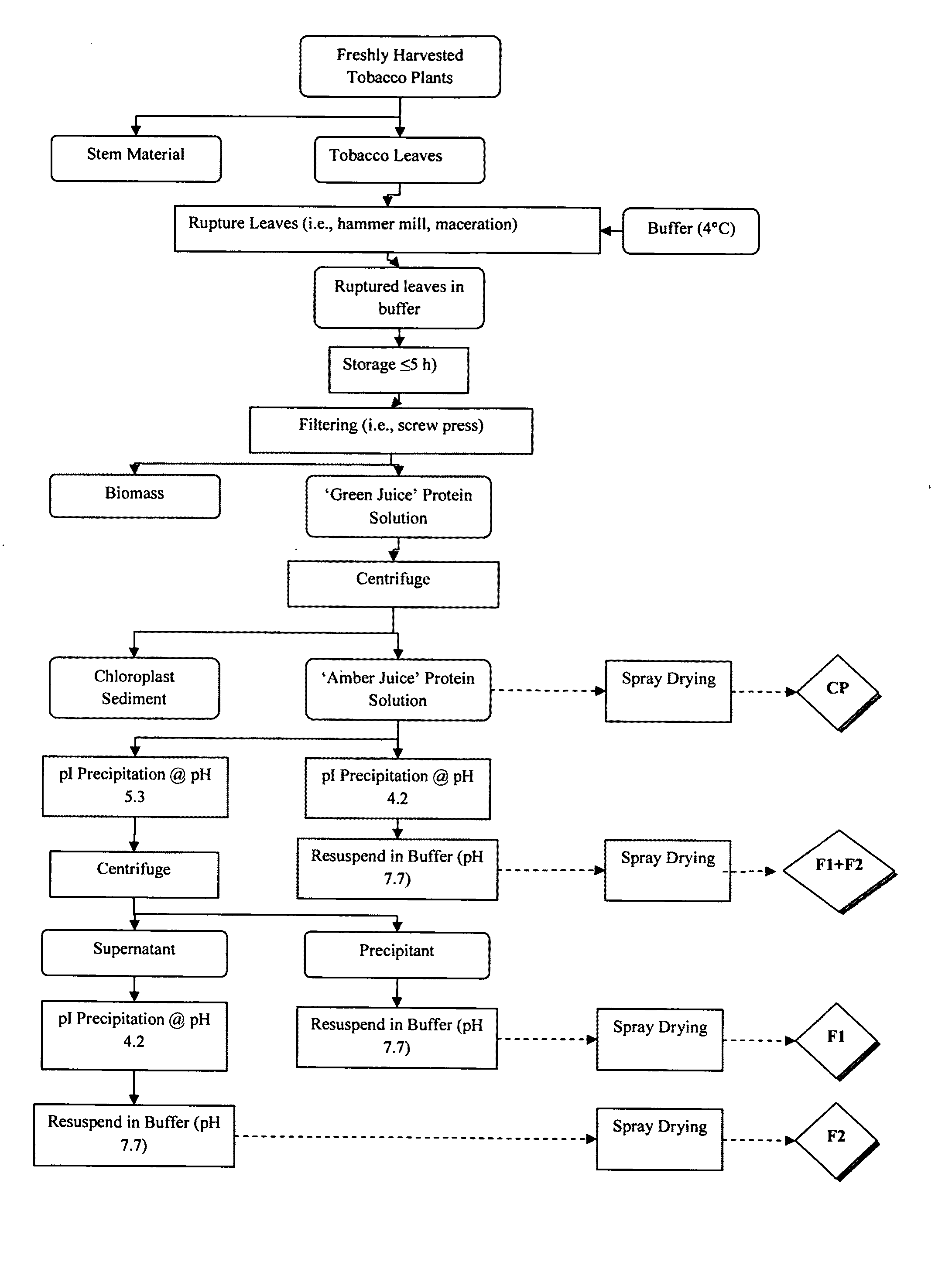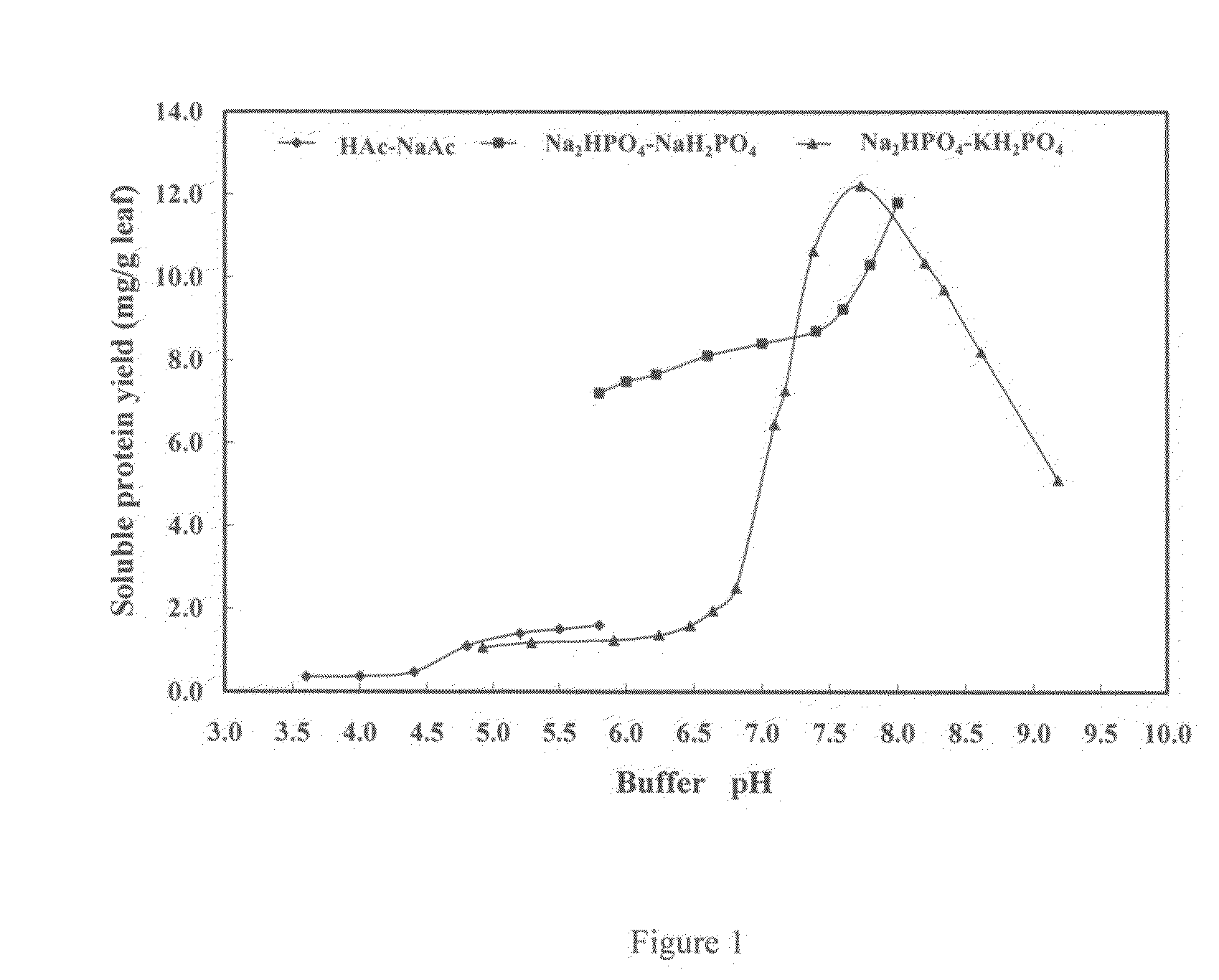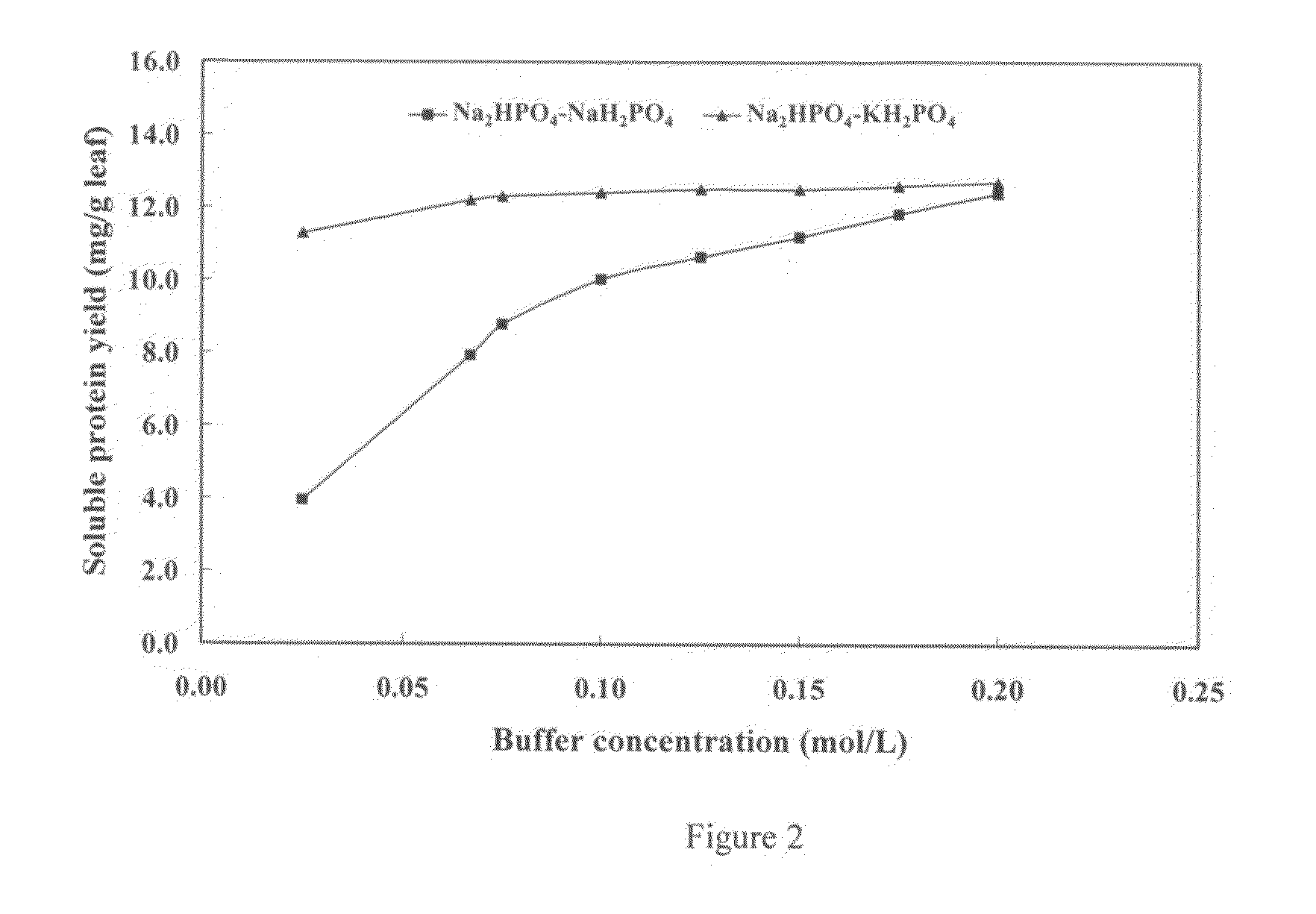Novel methods for recovery of leaf proteins
a protein recovery and leaf technology, applied in the field of leaf protein recovery, can solve the problems of many steps, inability to scale up, and limited commercial use of leaf protein recovery efforts, and achieve the effects of high protein yield, easy use or transport, and simple process of removing non-protein materials
- Summary
- Abstract
- Description
- Claims
- Application Information
AI Technical Summary
Benefits of technology
Problems solved by technology
Method used
Image
Examples
example 1
[0096]We performed an experiment to assess the effect of buffering agent and pH level on protein solubility. We tested three commonly used buffering agents:
[0097]0.2M HAc—NaCa buffer, at a pH range of 3.6 to 5.8 (HAc buffer)
[0098]0.2M Na2HPO4—NaH2PO4, at a pH range of 5.8 to 8.4 (sodium buffer)
[0099]0.067M Na2HPO4—KH2PO4 at a pH range of 4.9-9.2 (potassium buffer)
[0100]We found that the two sodium phosphate buffers were more effective at promoting protein solubility. We found that the sodium buffer yielded a maximum protein solubility of 2.46 mg / ml, at a pH of 8.33. We found that the potassium buffer yielded a maximum protein solubility of 2.43 mg / ml, at a pH of 7.77. We found that the HAc buffer gave much worse results, with a maximum protein solubility level of 0.31 mg / ml at a pH of 5.8. Most likely, the poor results of the HAc were due at least in part to the fact that the pH values tested were either close to the pI level of the protein (5.3) which minimized solubility, and the ...
example 2
[0101]In experiment 2, we tested five different buffer concentrations of both the sodium buffer and the potassium buffers, 0.05, 0.1, 0.15, 0.2 and 0.25 M, as follows:
[0102]Na2HO4—NaH2PO4 at pH 6.5
[0103]Na2HPO4—KH2PO4 at a pH of 7.77
[0104]We found that the potassium buffer had a much lower optimal buffer concentration than the sodium buffer. optimal buffer concentration for the potassium buffer was 0.067M. By contrast, the optimal buffer concentration for the sodium buffer, was 0.2M. Because the potassium buffer was effective at a substantially lower ionic concentration, we selected it as the optimal buffering agent. (See FIG. 2, “Effect of Buffer Concentration on Soluble Protein Yield”).
example 3
[0105]Experiment 3 studied the effect of temperature on protein extraction. Using the sodium buffer, Na2HPO4—NaH2PO4, at pH 6.50, we found that lower temperature coincided with increased solubility. We found that an extraction process carried out at five temperatures between 15° C. and 60° C. We found that protein solubility was substantially higher when the process was performed at 15° C. than at any higher temperature. This result is significant and advantageous, since performing the extraction process at higher temperatures may cause denaturation of the proteins. (See FIG. 3: “Effect of Temperature on Soluble Protein Yield”)
PUM
| Property | Measurement | Unit |
|---|---|---|
| temperature | aaaaa | aaaaa |
| pH | aaaaa | aaaaa |
| pH | aaaaa | aaaaa |
Abstract
Description
Claims
Application Information
 Login to View More
Login to View More - R&D
- Intellectual Property
- Life Sciences
- Materials
- Tech Scout
- Unparalleled Data Quality
- Higher Quality Content
- 60% Fewer Hallucinations
Browse by: Latest US Patents, China's latest patents, Technical Efficacy Thesaurus, Application Domain, Technology Topic, Popular Technical Reports.
© 2025 PatSnap. All rights reserved.Legal|Privacy policy|Modern Slavery Act Transparency Statement|Sitemap|About US| Contact US: help@patsnap.com



